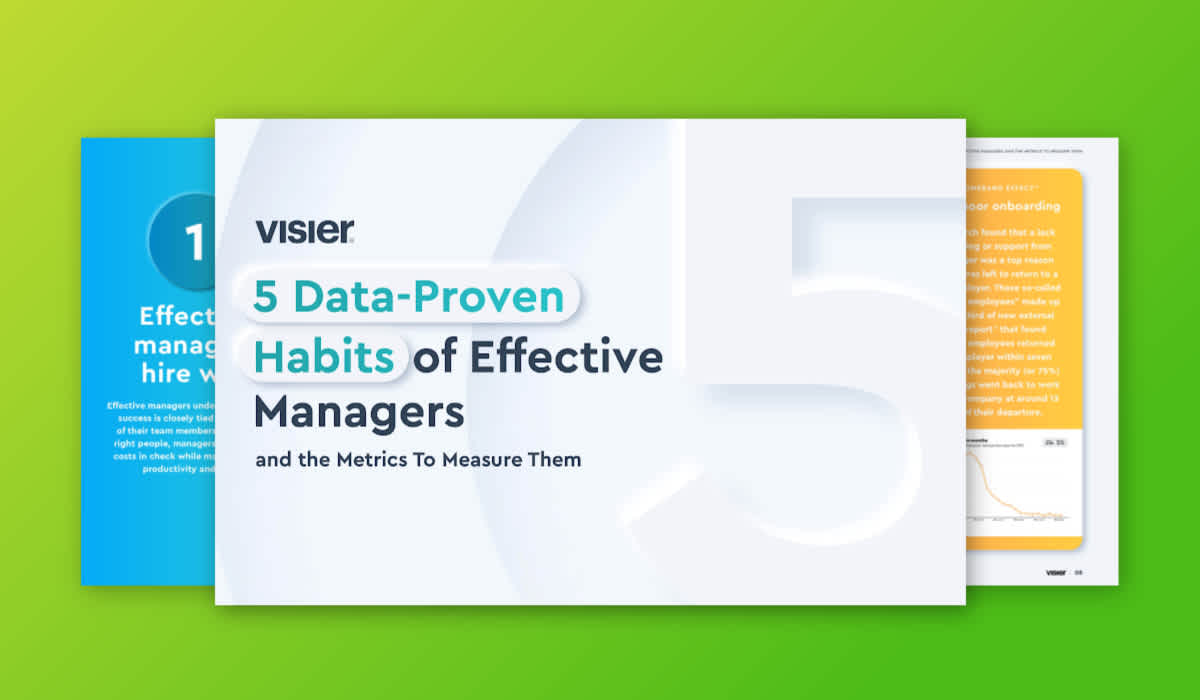Notes From the People Cloud | Untangling the Gordian Knot of Skills
Without connecting people with work and value we’ve only complicated the system. Here's a new approach to solving the skills problem.

The Notes From the People Cloud column is dedicated to elevating the conversation about people and work. Read on for expert perspectives on how changes in the world of work can be supported through smarter technology.
In 2008 I was the Labor Market Information Director for the State of New Jersey. You may remember this as the year when the Great Recession began and many people, from all walks of life, lost their jobs. In my role, I was expected to provide a simple answer to the most critical question of the time: Where are the jobs now?
As the economy was undergoing a complete transformation, the labor market was too, dealing with a kind of job skills crisis that had never been seen before. Major industries, particularly finance and manufacturing, were undergoing the biggest transformation in decades; many jobs were going away forever, jobs that were staying were transforming rapidly, and new ones were being created. The old way of labor market analysis based on occupation and industry codes was proving less relevant to all this transformation. How would I find the answer to my number-one question?

Never before have people been more critical to business success. Get ready for the future of work by watching Outsmart on demand.
2008-2009: New times call for new tools
Traditional labor market data couldn’t really say where the jobs were. It simply wasn’t granular or timely enough. So I excavated the data behind the New Jersey job board from a digital trash bin. I ended up creating what turned out to be one of the first—if not the first—real time labor supply and demand indices using job postings, projections, unemployment, training rosters, and other data elements. It was called “Real Time Jobs in Demand,” and it’s still in effect in some format today. Slowly but surely, the tool became policy, every workforce training dollar in the state was allocated using the tool, and dozens of training programs were being fired up every day to train people on jobs in demand.
That tool was the centerpiece during a state cabinet meeting to discuss the state’s response to the financial crisis. While proud of my contribution, I knew even then that more was needed. I remember speaking up to say, “I told you what jobs are in demand, I never told you what skills employers need in those jobs.”
2010: Creating skills taxonomies and hierarchies
This began my pursuit of skills. It’s also, uncoincidentally, when skills analytics came into the scene. People were being connected to job opportunities by a keyword, occupation, degree, or some other type of code that functioned as an insufficient shorthand for the skills actually required to perform the role. The result was that the best talent for a job was sometimes filtered out because there was no way for the hiring system to recognize the skills that the applicant could bring to the job if their application lacked one of the code words it looked for. Conversely, those that were selected for interviews because they hit the right keyword were often found to be the wrong fit. Codes and shorthand were no longer up to the task of accurately representing an applicant’s skills.
Determined to solve this problem, I joined Burning Glass, a job market analytics company. I hired a fantastic team to create one of the most robust skills taxonomies today (among many other standardized data elements, like education, experience level, standardized title, etc.). After Burning Glass, I created a real-time, dynamic skill-based ontology of roles at Emsi, also a jobs data organization. Both of these organizations have recently merged to own the most sophisticated and comprehensive skills ontology.
This effort to apply skills wasn’t intended to be a proxy for work experience or capability. Rather, it’s a way to add more color to people than the codes they were previously associated with. It allowed the system to recognize talents and expand the available pool of talent, especially of those in disadvantaged populations who, without specific degrees or experiences, had been excluded by the algorithm.
2012: Matching skills, not codes
These new skills models were also used to connect people with development opportunities. It was critical for people to be presented with development opportunities that are in line with their career goals, their accumulated experience, and their preferences. However, in most workforce development systems, the only way to connect people with learning is through a static career to education crosswalk (called the CIP-SOC Crosswalk), which, again, reduced people and work into codes.
Here’s an illustration of why including a broader perspective on skills was, and remains, critical, during the financial crisis for 2008. We found project management certification was in high demand, and as a result, the department of New Jersey requested funding for dislocated workers in finance to get project management certification. However, funding was denied because that certification was not tied cleanly to one occupation.
For the most part, employees have no way of prioritizing their development efforts, or selecting the courses that taught the skills that would be most critical for their career goals—because those skills had yet to be mapped to a particular occupation.
2013: The skills and learning disconnect
Bit by bit, matching skills parsed from job postings, resumes, and curricula became seen as a panacea for all talent problems inside an organization. Learning management systems pivoted to learning experience platforms promising to connect the skills of a role with learning. Behind the scenes, it was less intelligent: job roles were tagged with skills, as was learning content, and both were matched using an algorithm. Rather than developing general skills, employees were still being funneled through a job-coded training plan.
Netflix-style models of learning emerged shortly after, and people could see the learning courses and training taken or rated by people they were following or connected to. This meant that the learning people pursued was not goal-oriented; this learning was tied neither to the career goals of the individual nor the business objectives of the organization, but based on subjective reviews of prior consumers.
Billions of dollars went into these systems with the hopes that this self-guided approach to training would encourage employees to develop skills the organization needed. However, none of these efforts were tied to a strategic workforce planning initiative that took into account what the current skill capacity is for the organization, where it needed to go, what the gaps were, and how each employee could better themselves to make the whole organization more competitive. As such, employees floundered with too many choices and organizations found that they weren’t getting the skills that they needed—a lose-lose situation. In fact, an IBM study found that the time it took to fill a skill gap went from 3 days in 2014 to 36 days in 2018.
2016: Skills for internal talent marketplace
Alongside the ballooning of available learning tools, the internal talent marketplace solution started taking front seat in strategic workforce planning conversations. The promise of these new applications was that as talent supply tightens, the best way to meet the organization’s needs was by hiring from within. The proponents of these systems advocated for flexible, project-based work where projects are broken down into skills requirements. People were encouraged to create skills profiles in order to be considered for new projects and the hope was that projects and people will find each other automatically.
While these systems added great value to high-profile project work, the impact of these systems was still limited. Their adoption hasn’t scaled to workforce optimization. Also, none of these systems really look at teams as a unit of analysis, and how different people on the team can complement one another. Mostly, these systems measure everyone individually against a high-level role benchmark. Moreover, none of these systems are able to associate skills with business outcomes because the whole (business outcomes) is way more than the sum of parts (people’s skills).
2018 Onwards: Mayhem ensues
More and more organizations started adopting a number of these tools simultaneously. Why? Everyone wanted to develop a trifecta of skills, learning, and opportunity. Organizations needed a way to understand their talent, define current and emerging talent gaps, and deploy a system in place that can bridge these gaps effectively.
But each of these systems came with its own skills taxonomy, asserting it as the most advanced and comprehensive one. Skills wars began inside the organization on which solution would become the system of records for skills. Some organizations required these systems to synchronize their skills (usually carried out by vendors), but those efforts failed as similar skills were not matched, and skills that were matched were not accurate. So they ended up with one (or multiple) skills hierarchies for the labor market, another for HRIS, another for talent acquisition, another for learning, another for talent marketplace, and so on. The result? A continued failure to close skills gaps and engage employees with options for development that benefited them. This led to record low employee engagement, record high resignation, record low labor force participation, and total mayhem.
Today: The next phase for skills data
The centripetal forces on skills are turning this more into a Gordian Knot. Conflicting taxonomies and ontologies are created and being implemented in parallel. Most vendors are claiming they have a significant advantage in their skills comprehensiveness. Truth is, the value of skills is not intrinsic to the taxonomy or ontology, but the ability to understand skill gaps across disparate systems.
There has never been a greater need for harmonizing the outputs of these skills systems so that we can take in the whole picture. For the skills promise to be delivered, more organizations need to adopt an open-source approach, such as the one pioneered by Emsi. Even more, harmonization to taxonomy like Emsi’s will be the most effective way to align internal skills to the market. Failure to do so significantly limits the benefit of all such systems in benchmarking roles and determining labor cost and labor availability now and into the future.
I have the unique advantage of having developed and evaluated a wide variety of skills taxonomies. While some are more sophisticated than others, the value of these systems is not the taxonomy itself but the ease of embedding and integration with other (sometimes competing) systems.
Beyond that, talent leaders need to refocus on the original goal: to measure work and to understand what really affects business outcomes—from skills, to team structures, to learning. Without connecting people with work and value we’ve only complicated the system (and our lives) without any measurable returns on our investment. And this is why we need a new approach to solving the skills problem.


